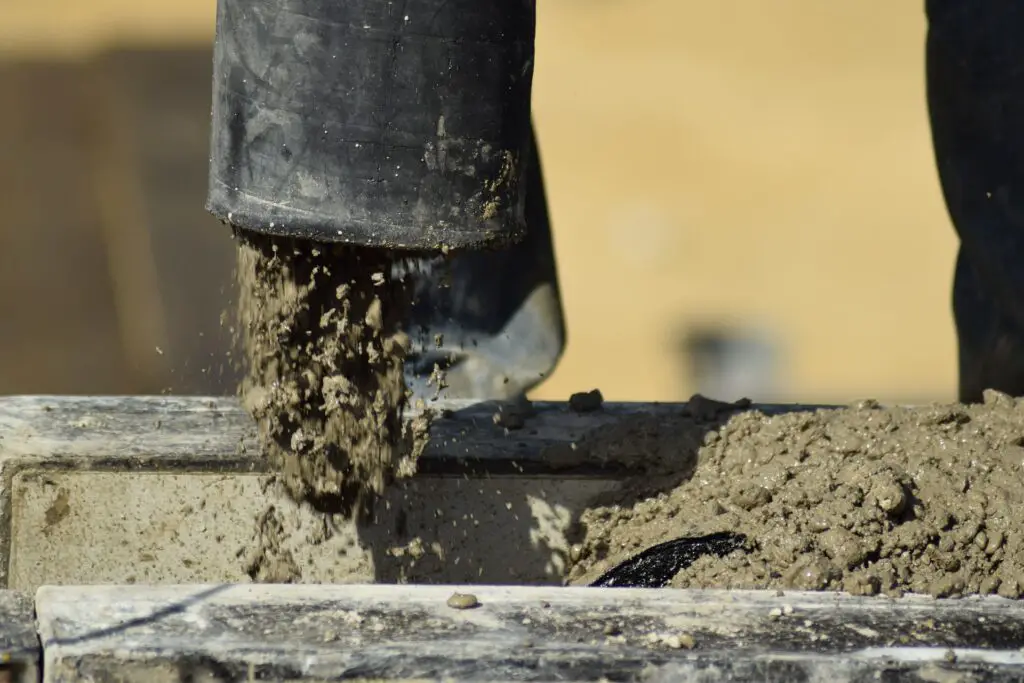Do You Need A Permit To Pour Concrete In Your Backyard?
One of the questions that people often ask is whether or not they need a permit to pour concrete in their backyard. The answer to this question is different from place to place, so it is important to check with your local municipality to know the requirements.
In some cases, you may need a permit to pour concrete, while in others, you may not.

Can You Pour Your Own Concrete in Your Backyard?
If you’re handy with a shovel and wheelbarrow, you might be wondering if you can pour your own concrete in your backyard. The answer is yes. However, there are a few things to consider before taking on the job yourself.
First, check to see if you need a concrete permit. In some municipalities, it’s illegal to pour concrete without a permit.
Hiring a contractor may be the best option if you’re allowed to pour concrete in your backyard. A contractor will have the proper equipment and know-how to properly mix and pour the concrete.
Pouring your own concrete can be a cost-effective way to build a patio, driveway, or other structure in your backyard. Still, it’s essential to do your research first and follow all local regulations.
How Do You Know When You Need a Permit for Pouring Concrete?
The right way to find out if you need a permit is to contact your local government. They will tell you what regulations apply to your area and whether or not you need a permit.
A permit may not be required for modest concrete jobs, such as the footings for fence posts, filling small gaps, or installing small concrete pads.
In order to prevent being fined for any concrete-related activity on your property, you should verify your city’s laws and regulations. Most of the time, a permit is required for larger projects like constructing building foundations, many walkways, and parking spots.
If your project rises more than 30 inches above the surrounding grade, Permits may be required. Pouring concrete requires a permit if the site is larger than 200 square feet. If your municipality’s zoning ordinances define the area where you plan to lay concrete as an environmental protection zone, you’ll need permits.
Do Certain States have Different Permit Rules for Concrete?
Pouring concrete for residential constructions in Texas is subject to stringent regulations, and permits must be secured in advance. When you apply for a permit, you need to show where the structure will be built, how it will look from above and below, and whether it will be portable or set on a concrete slab.
For example, if you will use a concrete slab, an official check must be done before any concrete is poured. This check can also include framing checks and final checks.
As long as the concrete is not more than 30 inches above grade and not over a basement or story below, California’s building permit is not needed.
On the other hand, concrete slabs are not regulated in New York unless they convey vertical loads or lateral stresses to the soil. In New York, regulations are mainly concerned with the concrete’s strength and weight load.
Typically, permission is necessary for structural concrete pouring; however, a permit may not be required if the concrete is being poured for modest repairs, as detailed in this document.
Does the Contractor Get the Permit or Does the Homeowner?
When getting a permit for a concrete slab, the contractor usually gets the permit. It is their responsibility to ensure that everything is done correctly and that all the permits are obtained.
They also need to make sure that they follow all the regulations set by the city or municipality. If something goes wrong, the contractor will be held responsible. Homeowners should be aware of this and should not try to get a permit independently.
What Happens if You Pour Concrete Without A Permit?
If you’re thinking about pouring a concrete slab without a permit, you should know some risks involved. Here’s what could happen if you decide to go ahead with the project without getting the necessary approval from your local government:
1. You could get fined for violating zoning regulations or building codes.
2. Your slab may not be up to code, which could lead to problems down the road.
3. You may not get a building permit for future projects if you don’t have a record of following the proper procedures.
4. Pouring concrete without a permit can also cause delays in your project timeline since you’ll have to wait for approval before moving forward.
What Is the Importance of a Permit?
When you are ready to pour concrete in your backyard, it is important to understand that you may need a permit from your local government. The rules for getting a permit vary from place to place, but the reason for needing one is often straightforward. Pouring concrete without a permit can result in fines and, in some cases, may even prevent you from completing the project altogether.
The main reason for needing a permit is safety. By ensuring that all concrete projects are done safely and professionally, your local government is trying to protect its citizens. Many things can go wrong when pouring concrete, and without the proper training and equipment, it can be very dangerous.
In addition to safety concerns, there are also zoning regulations to consider. Often, pouring concrete in a residential area requires a special permit since it can change the appearance of the neighborhood or create noise pollution.
How Close to my Property Line Can I Pour Concrete?
When you are ready to pour concrete, you first need to check with your local municipality to see if you need a permit. You may also need a permit to pour concrete in your backyard.
Most municipalities have specific regulations on how close you can pour concrete to your property line. Typically, the minimum distance is 18 inches from the side property line and 15 inches from the rear property. But it can be more depending on your municipality.
Is a Concrete Patio Considered a Structure?
A concrete patio is a popular addition to a home. It can provide a place to relax or entertain guests. But is a concrete patio considered a structure? The answer depends on how the patio is used. If it is used for support, such as for a roof or floor, then it is considered a structure.
If it is not used for support, it is not considered a structure. A concrete patio not used for support is not considered a structure because it does not serve any structural purpose. Depending on its location and size, it may still be subject to building codes, but it is not classified as a structure.
Do you need a permit for a patio?
When installing patio pavers, many people wonder if they need a patio permit. The answer to this question depends on the size and type of installed patio. Generally speaking, most patios don’t require a permit because they are not considered a permanent structure.
If you are unsure whether your patio requires a permit, it’s best to check with your local municipality. Another thing to keep in mind when installing patio pavers is the amount of space you will need. On average, a patio should be at least 300 square feet. However, this can vary depending on the size and shape of your yard.
What if I am Pouring a Concrete Driveway? Do I Need Permit To Fix My Driveway?
If you plan to pour a concrete driveway, you may need to get a permit from your local government. The rules for getting a permit vary from place to place, so it is best to verify with your local government to determine what is required.
Generally, you will need to show that the driveway meets all zoning and building codes and will not cause any problems for traffic or pedestrians. If you are not sure whether you need a permit or not, it is best to err on the side of caution and get one anyway. A permit can help ensure that your concrete driveway is done correctly and safely.
Do I Need a Permit to Build a Gazebo?
In most cases, you will need a permit to build a gazebo. This is because a gazebo is considered a structure, and all structures need permits.
The specific requirements for getting a permit will vary depending on your location, so be sure to check with your local building department. Generally, you will need to submit drawings of the gazebo and provide information about its size, height, and materials.
Final Words
It is crucial to understand when a permit is necessary for pouring concrete. If you are unsure whether or not you need a permit, it is best to contact your local municipality. By following the proper steps and procedures, you can avoid fines and penalties.







